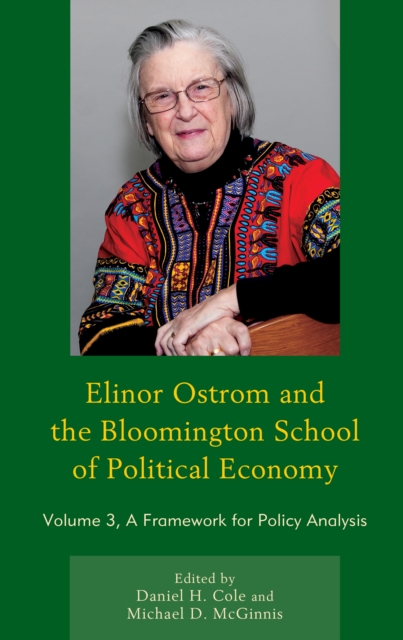
Elinor Ostrom and the Bloomington School of Political Economy : A Framework for Policy Analysis Hardback
by Daniel H. Cole, Michael D. McGinnis
Hardback
Description
In addition to winning the 2009 Nobel Prize in Economic Sciences for her path-breaking research on “economic governance, especially the commons,” Elinor (Lin) Ostrom also made important contributions to other fields of political economy and public policy.
This four-volume compendium of papers written by Lin (often with coauthors, most notably her husband, Vincent), along with papers by others expanding on her work, brings together the strands of her entire empirical, analytical, theoretical, and methodological research program.
Together with Vincent’s important theoretical contributions, they defined a distinctive “Bloomington School” of political-economic thought. Volume 3 explores the historical development of the Institutional Analysis and Development (IAD) framework, illustrates its application to a wide range of specific policy problems, and highlights recent extensions that ensure it will remain a vibrant focus of research for years to come.
The IAD framework emerged from a long series of interdisciplinary collaborative research projects, but the guiding figure in its development was Elinor Ostrom.
Anyone familiar with the full range of her research will recognize common presuppositions and themes for which she used the IAD framework as an organizing device.
This book collects examples of policy-relevant applications of IAD to a wide range of policy sectors.
In a fundamental sense, the IAD framework helps us understand how Ostrom’s mind worked when she approached a particular problem of policy, and it highlights those factors that she asserted needed to be considered in any complete analysis.
Unfortunately, she did not leave us a complete or definitive guidebook on how to apply this framework.
This volume collects important components of such a guidebook from a wide range of sources, including previously unpublished papers, and as such it should help anyone seeking to use this framework to analyze a variety of policy areas.
Information
-
Available to Order - This title is available to order, with delivery expected within 2 weeks
- Format:Hardback
- Pages:456 pages
- Publisher:Lexington Books
- Publication Date:21/03/2017
- Category:
- ISBN:9780739191118
Other Formats
- Paperback / softback from £39.09
Information
-
Available to Order - This title is available to order, with delivery expected within 2 weeks
- Format:Hardback
- Pages:456 pages
- Publisher:Lexington Books
- Publication Date:21/03/2017
- Category:
- ISBN:9780739191118






